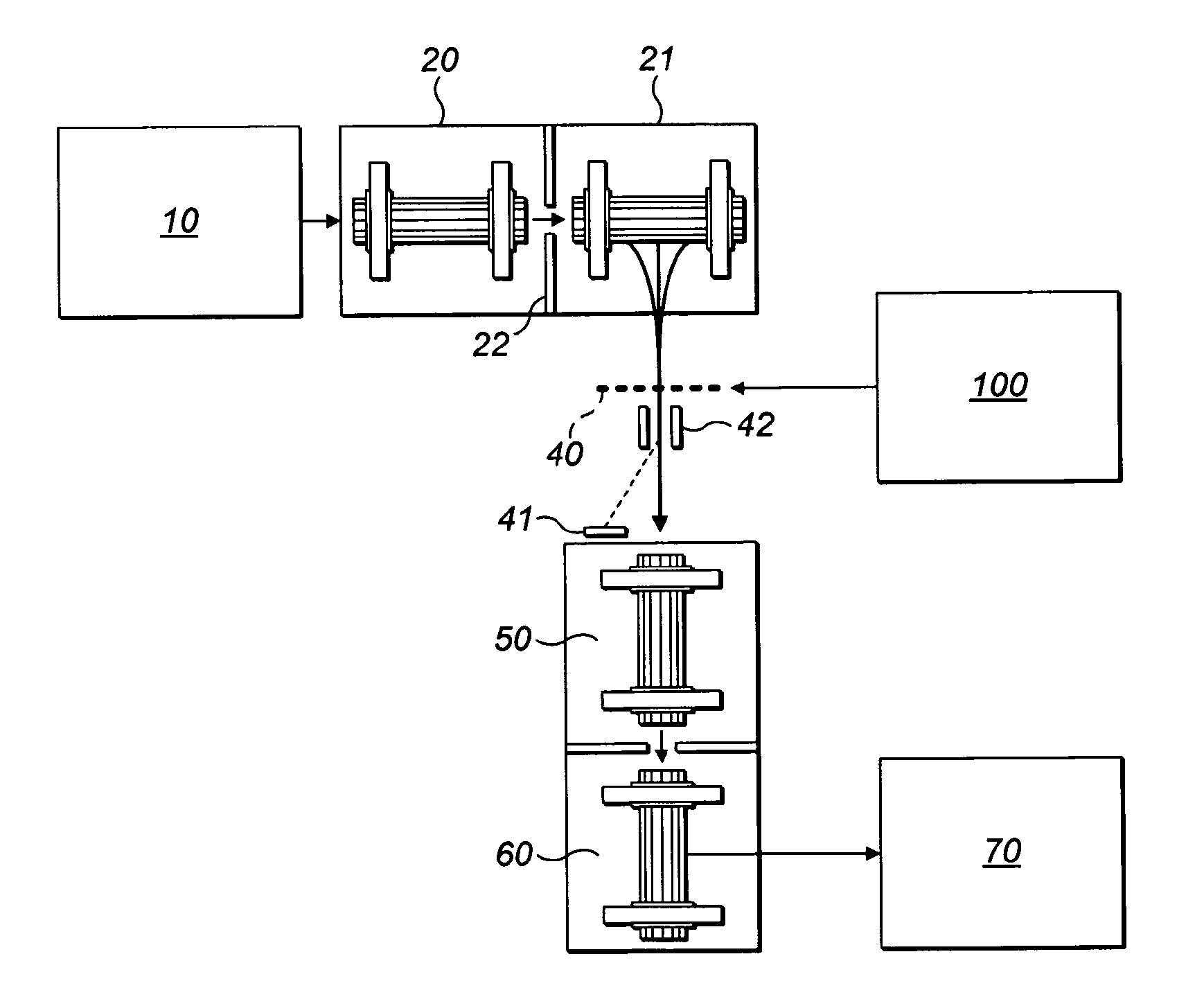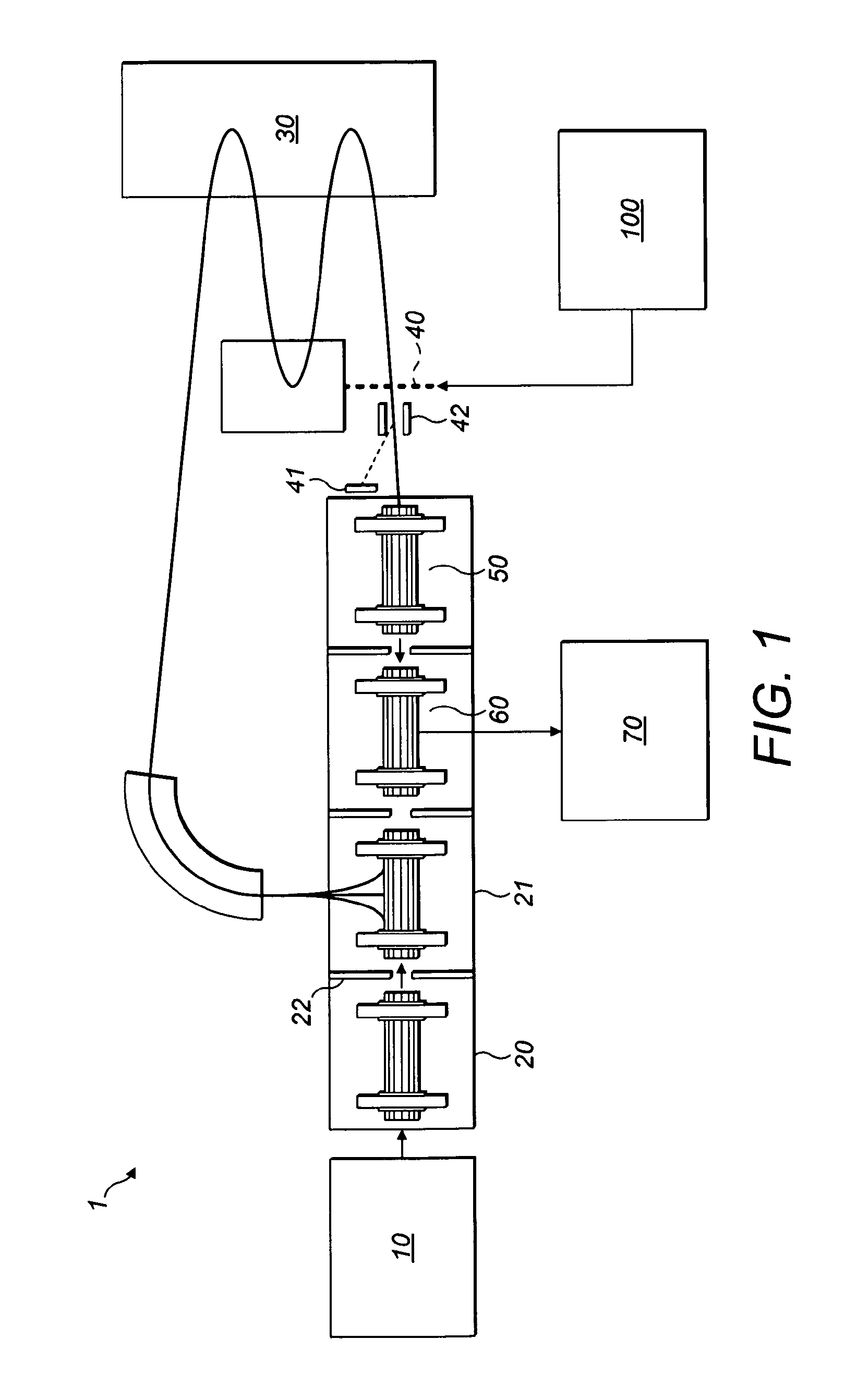Targeted analysis for tandem mass spectrometry
a tandem mass spectrometry and target analysis technology, applied in the direction of electron/ion optical arrangement, particle separator tube details, separation process, etc., can solve the problems of wasteful operation, affecting rapid quantitation analysis, and all other m/z lost on the quadrupole rods
- Summary
- Abstract
- Description
- Claims
- Application Information
AI Technical Summary
Benefits of technology
Problems solved by technology
Method used
Image
Examples
Embodiment Construction
[0023]Referring first to FIG. 1, a tandem mass spectrometer 1 is shown. The mass spectrometer 1 comprises an ion source 10, such as an electrospray ion source or a MALDI ion source, which generates a continuous or pulsed stream of charged particles (precursor ions) to be analysed. The ions from the ion source are introduced into a first stage of rf-only storage (ion trap) 20 immediately followed by a second stage of rf-only storage (ion trap) 21. Both the first and second ion traps 20, 21 are formed by linear rf-only multipoles filled with gas and separated by an aperture 22. The aperture gates the incoming ion flow. Most preferably, the second ion trap 21 is a so called curved linear trap or c-trap—for example of the type described in WO-A-2008 / 081334. The rf frequency applied to the multipoles of the first and second stages 20, 21 is preferably between about 2 and 5 MHz. The pressure in the second ion trap 21 is chosen so as to provide ion cooling within a short time period, prefe...
PUM
 Login to View More
Login to View More Abstract
Description
Claims
Application Information
 Login to View More
Login to View More - R&D
- Intellectual Property
- Life Sciences
- Materials
- Tech Scout
- Unparalleled Data Quality
- Higher Quality Content
- 60% Fewer Hallucinations
Browse by: Latest US Patents, China's latest patents, Technical Efficacy Thesaurus, Application Domain, Technology Topic, Popular Technical Reports.
© 2025 PatSnap. All rights reserved.Legal|Privacy policy|Modern Slavery Act Transparency Statement|Sitemap|About US| Contact US: help@patsnap.com



